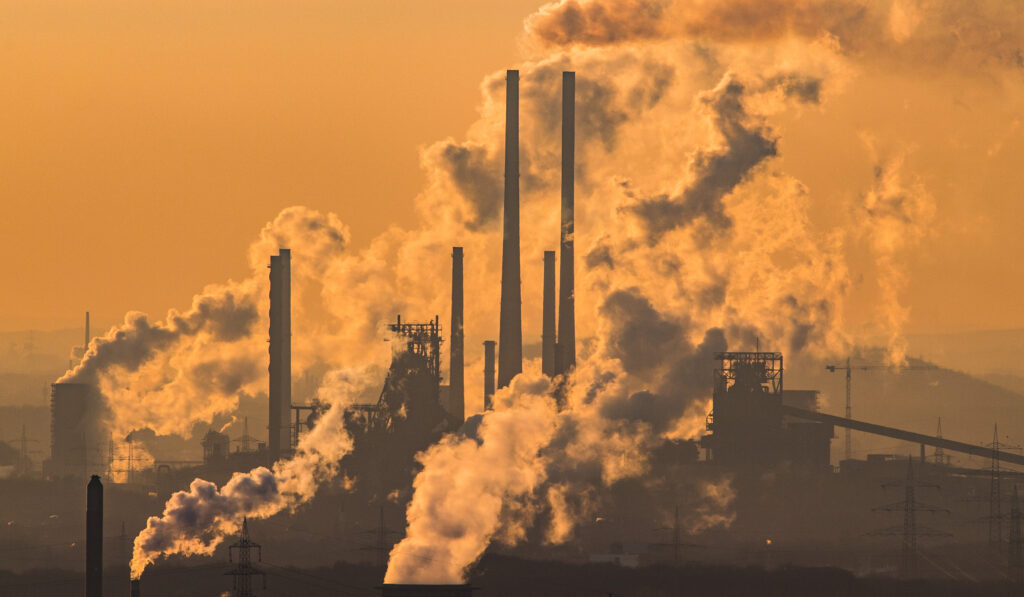Key Takeaways
- Reinsurers have increased their efforts to incorporate climate change in their decision-making process, particularly in risk management, exposure management, and pricing. However, this is still nascent across the industry, and many companies are facing difficulties in implementing climate change considerations robustly.
- Our scenario analysis suggests that reinsurers’ estimates of their exposure to natural catastrophe risk–and therefore physical climate risk–could be underestimated by 33%-50%, which is 91% of the sector’s buffer above the ‘AA’ capital requirement. While not our base case, this scenario illustrates significant potential for volatility in earnings and capital.
- Unmodelled risks and the inherent difficulties in attributing extreme events to climate change create the risk that climate change may not be fully reflected in catastrophe modelling, particularly in the short term.
- 71% of reinsurers responding to our survey consider climate change in their pricing assumptions, but only 35% include a specific component of the price allocated to climate change. This ranges from 0%-10% of the rate charged on average, and does not appear to be a significant determinant of market pricing.
- We consider exposure to the physical risks of climate change to be a key factor in our ratings on 19 of the top 21 rated reinsurers primarily through our forward-looking assessment of risk exposure. We believe that those companies that take a more proactive approach to understanding and adapting their exposure to climate risk will be better protected against future capital and earnings volatility linked to climate-related losses.
So far this year, the industry has seen the second-largest amount of insured catastrophe losses on record, while so-called secondary perils (such as winter storms, wildfires, intense heatwaves, and severe flooding) have contributed a record amount to the total insured losses, according to Swiss Re.
There is increasing agreement from experts, including the Intergovernmental Panel on Climate Change (IPCC) report published in August, that the physical effects of climate change are contributing to more frequent and extreme weather events, which will in turn have a direct impact on the re/insurance industry. Re/insurers may consider that the effects of climate change will not be felt for some time, and that at present, the ability to annually reprice most property policies provides them with some insulation. However, there is clear scientific consensus that climate change is already influencing the frequency and intensity of extreme weather–and therefore (where not suitably mitigated), insured losses–today. If re/insurers are not properly accounting for the impact of climate change in their catastrophe modelling and pricing today, it could lead to significant unexpected volatility in their earnings and capital, resulting in pricing corrections that could have implications for the cost of reinsurance purchased by primary writers, thereby hitting their profitability and risk profiles as well.
Projecting The Catastrophe Risk Landscape
To understand the possible effects of climate change on reinsurers’ financial strength, we apply a simple stress scenario based on 30 years of insured loss experience from catastrophes (the “empirical” stress scenario; see box below). We select a 30-year period because the industry has experienced a significant increase in weather-related losses over that time, even allowing for inflation and exposure growth (see chart 1). Although natural variability in the Earth’s climate contributes to much of the fluctuation in extreme weather events seen in recent years, climate attribution science–that is, the research and modelling that seeks to attribute, or not, extreme weather events to human-caused climate change–shows that most of these events (70% in the last 20 years) have been made worse or more likely by climate change. This empirical view in our scenario, based on the past 30 years, implicitly incorporates any impact that climate change has already had on catastrophe losses in that period.
Chart 1
Our empirical scenario (see chart 2) indicates that the reinsurance industry could be underestimating its exposure by about 33%-50%. This is because our empirical scenario suggests a $150 billion insured industry loss at a one-in-10-year return period while, based on the exposure from the top 21 global reinsurers, we assess that the industry is modelling this size of loss to be much less likely at return periods of between one-in-20 and one-in-30 years. This is less frequent than under our empirical scenario. The 33%-50% uplift would bring the industry’s one-in-10-year view in line with our empirical scenario.
Our scenario highlights that for the more recurrent events, typically below the one-in-50-year return period, there is a risk that exposure might be underestimated. For return periods beyond this point, where there is actually no data point in recent history, we think it is difficult to quantify potential underestimation. Nonetheless, we believe that under our scenario, very extreme losses–such as a one-in-200 or one-in-250-year event–would likely be underestimated, and we have assumed a shift of the risk of a similar magnitude. Earnings and capital volatility of global reinsurers would undoubtedly be increased under our empirical scenario.
Chart 2
The scenario’s results point to a material increase in the amount of capital re/insurers will need to hold for their catastrophe exposures (that is, the one-in-250 catastrophe charge in our risk-based capital model), to the tune of $21.7 billion in aggregate for the industry. In addition, the modelled exposure to a one-in-10-year event for the industry would increase by at least $7.4 billion in aggregate. Chart 3 demonstrates that these additional capital considerations would deplete 91% of the sector’s estimated $32.1 billion excess capital buffer above the ‘AA’ capital requirement after a one-in-10-year loss.
Chart 3
In order to offset the additional capital burden and increase in expected losses, re/insurers would likely have to increase the premium rates they charge for natural catastrophe business. However, in our view, the industry’s ability to reprice for the risk of climate change may not be sufficient or responsive enough, particularly in a largely commoditized market with differing viewpoints on the adequacy of pricing for physical climate risks. Results from the climate stress test of French banks and insurers by their regulator, the Autorité de contrôle prudentiel et de resolution (ACPR), found that claims ratios from natural disasters could increase between two and five times by 2050, which would result in an increase of premiums for natural catastrophe business in France of 130%-200% over the same period; an annual average increase of 2.8%-3.7%. These examples show how difficult it may be for the sector to increase prices over a longer period of 30 years, while current hardening price cycles are much shorter and are following usually regional loss events. The present firming rate environment started in 2018, following the large catastrophe losses in 2017, and is less pronounced than earlier hardening pricing cycles. In our view, this reflects sufficient capacity and the commoditization of some parts of the sector. Chart 4 illustrates that when comparing actual global catastrophe rates-on-line (ROL) over the past 30 years against the premium increase implied by the ACPR’s scenarios, meeting those necessary increases would be a challenge for the industry.
Chart 4
The results of this stress test are not intended to affect ratings or change our base-case assumptions for our analysis of the ratings on reinsurers. As discussed below, our ratings on reinsurers capture future potential volatility to capital and earnings in our assessment of their risk exposure. Rather the stress test is intended to illuminate the potential exposure to climate risk at an industry level and facilitate dialogue with issuers about their management of climate risk. We recognize that 30 years is a relatively short period from which to build a robust probabilistic view, and that using longer time periods (50-100 years) leads to more robustly calibrated, stochastic models. We also recognize the limitation of a simple scenario against the range of outputs and usability of a stochastic model. However, we believe it is possible that the risk of extreme events may be underestimated when using data that comes from a period when climate change had less of an effect on the underlying weather risk. Therefore, the outcomes from the scenario provide us with a starting point for a dialogue with re/insurers about their modelling assumptions.
The “Empirical” Stress Scenario
Our empirical stress scenario assumes that the recurrence of extreme observations over the past three decades may be typical of the future. It takes the view that an annual $150 billion insured catastrophe loss would recur every 10 years on average; that is, a one-in-10-year loss. This is based on the top-three annual insured losses observed in this 30-year period in years 2005, 2011, and 2017, which are very close to $150 billion after adjustment for inflation and exposure changes, according to the Swiss Re Institute.
We think that our scenario could help reinsurers to have an even greater focus on the short-term impact of climate change. Reinsurers have the flexibility to adjust their exposure and pricing on an annual basis, but what might be believed to be a gradual long-term adjustment may turn to be a more abrupt rethinking than anticipated.
Our scenario captures an aggregate industry view of potential underestimation of the risk. We acknowledge that the scenario could have different results at reinsurer levels. Indeed, each reinsurer typically has its own view of risk, reflecting different understanding and perception of risk and exposure.
Reinsurers Are Embedding Climate Change In Their Business Steering, But Challenges Abound And Practices Vary
S&P Global Ratings has analyzed property catastrophe exposure through our annual survey for the past 15 years and has recently introduced specific questions (see box below) to gain greater clarity of reinsurers’ practices in measuring and monitoring their exposure in their liability profiles on climate change. Below, we discuss the results of these survey questions based on responses from 17 rated reinsurers.
S&P Global Rating Property Catastrophe Survey–Climate Change Questions
1. How important is climate change in your property catastrophe decision-making process?
2. Do you reflect climate change in your re/insurance pricing?
3. Do you reflect climate change in your re/insurance probable maximum losses (PMLs)?
4. Do you perform any climate change stress tests/scenario testing on your PMLs?
5. Do you plan on incorporating predictive modelling in your catastrophe management?
In general, the reinsurance sector benefits from strong enterprise risk management capabilities and longstanding property catastrophe modelling. Most reinsurers use external vendor models for natural catastrophe modelling. These results are usually combined with reinsurers’ own experiences to define their risk appetite on natural catastrophe exposures and for pricing these risks.
All reinsurers in our sample acknowledge the importance of climate change in their property catastrophe decision-making processes and have embedded climate change considerations in their risk management tools (see chart 5). No reinsurer in our analysis considers climate change as “low importance” in property catastrophe decision-making processes, while a majority (71%) assess climate change as of being of “medium importance,” demonstrating their awareness of the issue. The reinsurers in our survey acknowledge that the effects of climate change can and do vary by region and peril; however, they indicated that monitoring the impact on, for example, windstorms, wildfires, floods, or heavy rain remains key to reinsurers’ ability to react appropriately. Survey respondents have provided selective examples of strategic decisions that have been influenced by climate risk, such as reducing exposure to certain regions or perils or increasing the amount of retrocession they purchase. However, the magnitude of these strategic decisions varies, and reinsurers’ strategic decisions are influenced by a multitude of factors, such as market conditions, pricing, or regulation. It therefore remains difficult to fully link decisions to climate change.
We view favorably that reinsurers are considering climate change as being of at least “medium” importance, and some are making strategic business decisions with climate change in mind. However, climate change has implications across the re/insurance business model, and those implications can vary significantly due to differing exposures and interconnectedness of the risk. Therefore, we believe that reinsurers that take a more comprehensive approach to embedding climate change considerations in their decision-making throughout the organization will be better able to protect themselves from the risks posed by climate change.
Chart 5
Some reinsurers suggest that they are in the early stages of embedding climate change in their strategies, while 20% of respondents pronounce the long-term effects over short-term impacts, in the sense that climate change can only become visible over many years. This position may contradict the increasing scientific certainty, borne out by climate attribution science, that the physical effects of climate change are already being felt. For example, a 2020 study (Frame, Wehner, Noy, et al., 2020) found that three-quarters of the economic damage from Hurricane Harvey in 2017 was caused by rainfall that can be attributed to anthropogenic climate change.
Another area of concern raised by reinsurers is unmodelled risks in climate change. The sector tries to capture that risk via adjustments of vendor models and expert judgments based on own observations and data. The lack of consistent and reliable data to inform re/insurers’ views on their exposure to climate change in their underwriting portfolios is a real test for the industry. We believe that re/insurers that are utilizing expert judgment and analysis to reflect their own view of risk in their modelling will better understand their exposures and possibly be in a stronger position to inform strategic decisions about climate-related risks than those relying solely on outputs from vendor models.
Seventy-one percent of survey respondents outline that climate change is already implicitly included in the pricing via the widely used vendor models in natural catastrophes (for example, a forward-looking view on sea temperature development). However, only 35% of the total cohort add an additional explicit load into pricing based on their own assumptions. The amount of explicit loading can vary by region and peril, but we believe the average load is in the low-single-digit percentage range of the overall pricing, and does not play a dominant role in premium rates charged by the market for natural catastrophe risk. Reinsurers also outline that the majority of policies written have a duration of one year, and a minority are multi-year contracts (usually not more than three years) allowing for yearly adjustments of pricing and risk appetite. However, as illustrated in chart 4, we think this could prove difficult for the industry, and is perhaps not a solution on which participants should rely too heavily. Those whose models capture best the most recent trends in catastrophe activities would likely be better positioned to handle losses in the short to medium term. This is because their risk-adjusted pricing and exposure management preparedness would provide them with an edge.
Aggregation of a reinsurer’s PML for a given year is an important measure for defining risk appetite and in determining the types and extent of risk mitigation factors applied to manage exposure. A majority (59%) of reinsurers included in our analysis reflect climate change in this annual aggregation, while 41% do not (see chart 6). Reinsurers claim that the impact of climate change on the yearly PML can vary again by region and peril, and that the quantitative effect on the PML can be up to 10% for respective perils. Some reinsurers highlight that vendor models may provide a good starting point in that respect, similar to pricing, while the complexity of risk aggregation makes it difficult to exactly disaggregate the effects associated solely with climate change. For example, other trends such as macroeconomics are part of ongoing model validation from vendors and by reinsurers. In that context, it is a challenge for reinsurers to isolate the effect of climate change on their modelled loss estimates from other developments, such as company-specific exposure growth, inflation, economic growth or urbanization, and migration to coastal areas. At the same time, reinsurers see the potential for more demand for reinsurance protection and business opportunities stemming from climate change. The reinsurers included in our analysis also suggest that there is some difficulty in fully incorporating long-term climate change trends into a one-year PML, pointing again to the ability to reprice most of the contracts on an annual basis.
Chart 6
When it comes to stress testing, the majority (76%; see chart 6) of reinsurers included in our analysis perform regular stress testing on the impact of climate change, such as rising sea levels or global warming. In our view, this is partly driven by the sector’s well advanced enterprise risk management capabilities, but also by regulatory initiatives such as the biennial exploratory climate change stress test by the Bank of England, the ACPR, or Solvency II as part of the own risk and solvency assessment. Reinsurers also report that there is more stress testing to be planned in the future within business steering. Reinsurers described a wide-ranging impact on the PMLs from climate stress tests, ranging from low single digits for many, to 100% in the extreme. Predictive modelling (a complex datamining technique) in property catastrophe management is currently planned by only a minority (29%) of the reinsurers included in our analysis. Many reinsurers expressed their interest in potentially increasing expenditure in this space. About 12% of survey respondents, however, believe that regular updates of catastrophe models have an implicit predictive element with regards to climate change. This assumption places a lot of faith in the vendor models, and runs the risk of “giving away the pen” or accepting model assumptions that may not properly reflect the reinsurer’s own risk profile. We believe that stress and scenario testing and other quantitative tools can be informative for reinsurers to assess their exposure to different climate scenarios, and to identify the scope of the challenge to manage those exposures through adaptation and mitigation efforts in the coming years. These tests can be a useful tool in a suite of qualitative and quantitative approaches for reinsurers to assess their climate-risk exposure.
How Do We Factor Climate Change Risk Into Our Ratings?
When sufficiently material to affect our view of creditworthiness, environmental, social, and governance (ESG) credit factors, including physical climate risk exposure, can influence credit ratings.
Physical risks associated with the environment, including events such as wildfires, droughts, floods, or hurricane–as well as longer-term shifts in climate patterns resulting in rising temperatures, higher sea levels, or increased weather variability–are material factors in our credit rating analysis of many reinsurers. For 19 of our top 21 rated reinsurers, we have identified exposure to physical risks as the main factor in a risk exposure assessment of high or moderately high. Under our rating framework (see chart 7), this results in a negative adjustment to those reinsurers’ financial risk profiles. These risks are more acute in this cohort when compared with the wider insurance sector, where we have identified physical risk as a material consideration in the rating analysis of 3% of insurers globally. We recognize that exposure to physical risk, primarily through the underwriting of property catastrophe re/insurance, is an inherent component of reinsurers’ risk profiles and business models, and has historically proved to be a profitable undertaking for the sector. However, we have also observed significant volatility in capital and earnings within the sector as a result of natural disaster losses. This is also reflected in our assumed normalized impact on the reinsurance sector’s natural catastrophe effect on the combined ratio (a measure of profit and loss) of a given year of about 8%-10%, while it can significantly grow in years of large natural catastrophe events–such as in 2017, when it was 17 percentage points (see chart 8).
Chart 7
Chart 8
Considering the significance of physical risks to reinsurers’ business models and ratings, we have been measuring the sector’s exposure to this risk through our annual natural catastrophe survey for over 15 years. In addition, we have recently included specific questions and data requests on how re/insurers are considering the impact of climate change on their underwriting and broader decision-making through our annual surveys and management meeting discussions.
The information gathered from those surveys and discussions, as well as from scenario analysis such as the one in this commentary, will help us to assess the industry’s exposure to physical and other climate-related risks, as well as to identify best practices in assessing and managing the risk to re/insurers’ business models. These will help to inform our assessments of risk exposure and more broadly our credit rating analysis of the sector.
















